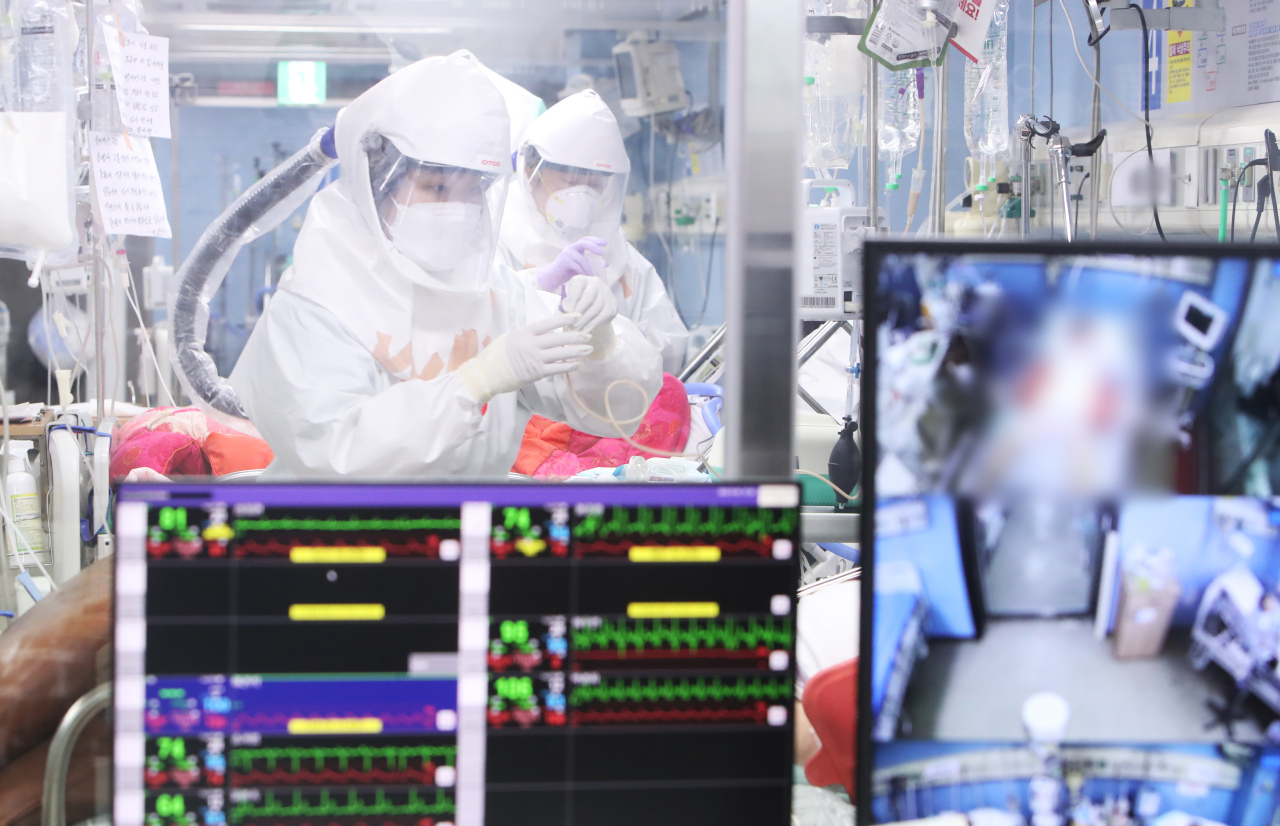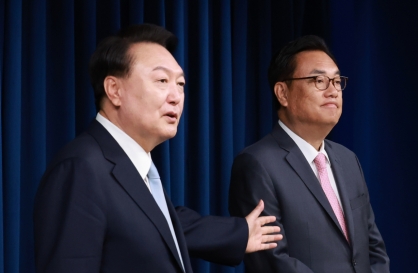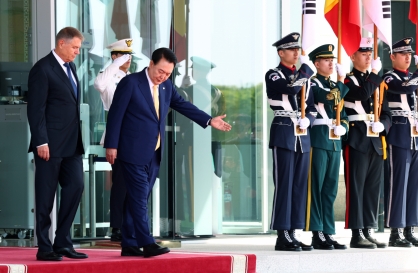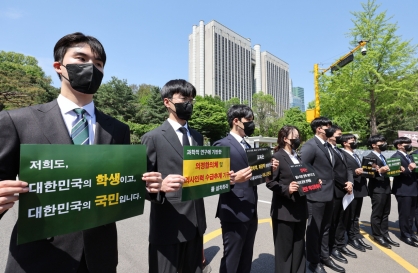Hundreds of health workers at hospitals and care homes across South Korea said Wednesday they would be staging a protest rally Thursday, retracting their plan to walk off the job, saying their calls for a manageable pandemic workload have gone unheeded by the government.
Kim Han-byul, one of the representatives of the health care workers’ union, comprising more than 7,600 health and care workers around the country, said the strike was “poised to be averted” after members at two of the larger state hospitals decided to back out Wednesday morning. Instead, the union will stage an outdoor protest outside Cheong Wa Dae at Thursday noon.
“The union most likely would not be able to go through with the strike, as more than 40 percent of our members aren’t able to take part. That does not mean our demands for fair treatment have been met.”
The union said in a statement issued Monday that to prepare for a COVID-19 surge as the country began returning to normal ahead of winter, they had asked the government to augment staffing and implement other support measures.
“In opening up the country, the government said it predicts the number of COVID-19 patients to rise to around 5,000 a day. But not one word was said about what steps might be taken to ease the heavier burden on health workers,” the union said.
“Then again last week, in ordering hospitals to free up more beds to make room for up to 10,000 COVID-19 patients being diagnosed daily, the government said nothing about how it would address the pressure on health workers.”
The union said the government -- while acknowledging that the pandemic exit plan would add to the strain on the health care system -- ignored the difficult working conditions for front-line workers, leading to the vote to strike.
As for concerns about patients being left out of care, the union stressed that workers who provide emergency or nonelective medical services would not be involved in the walkout or the protest.
During a televised briefing Thursday, senior Ministry of Health and Welfare official Lee Chang-joon said from the latest negotiations with the union, an “understanding has been established that the union action will not lead to a significant disruption in medical services.”
Lee said the ministry was “determined to provide solutions to staffing and other issues raised by the union.”
“In the last three rounds of meetings the ministry and the union came to terms over how the nursing workforce would be deployed at every hospital with a COVID-19 ward,” he said.
Dr. Eom Joong-sik, an infectious disease specialist at Gachon University Medical Center near Seoul, said hospitals were scrambling to heed Friday’s governmental order to save intensive care beds for COVID-19 patients. The order, he said, had spurred a “wave of resignations” among nursing staff.
“Frankly I cannot blame them. Our COVID-19 beds are already full. They’ve been picking up extra shifts on top of their regular duties with hardly any compensation -- like a couple hundred thousand won -- from the government,” he said. No matter how overwhelmed, hospitals are not allowed to turn COVID-19 patients away.
A head nurse at a Seoul hospital said the pandemic has “spawned an exodus of medical professionals, especially nurses.” According to figures provided by the union, some 4,000 nurses have left the field in just the past year.
“Long working hours, little or no hazard pay, a poor work environment and a sense of disrespect are pushing front-line workers to leave, or consider leaving their profession,” she said.
Kim Wan-bae, a representative of the Korea Hospitals’ Association, said the biggest challenge was retaining the workforce in the first place, and then finding the replacement for those who resign. Most hospitals were struggling financially from the pandemic, compromising their ability to raise pay.
“Change cannot come from within a single hospital. Systemic changes would require policy-level support,” he said.
By Kim Arin (
arin@heraldcorp.com)

![[AtoZ into Korean mind] Humor in Korea: Navigating the line between what's funny and not](http://res.heraldm.com/phpwas/restmb_idxmake.php?idx=644&simg=/content/image/2024/04/22/20240422050642_0.jpg)
![[Exclusive] Korean military set to ban iPhones over 'security' concerns](http://res.heraldm.com/phpwas/restmb_idxmake.php?idx=644&simg=/content/image/2024/04/23/20240423050599_0.jpg)



![[Graphic News] 77% of young Koreans still financially dependent](http://res.heraldm.com/phpwas/restmb_idxmake.php?idx=644&simg=/content/image/2024/04/22/20240422050762_0.gif)
![[Herald Interview] Why Toss invited hackers to penetrate its system](http://res.heraldm.com/phpwas/restmb_idxmake.php?idx=644&simg=/content/image/2024/04/22/20240422050569_0.jpg)
![[단독] 육해공군 본부 아이폰 금지 검토…전군 확대 가능성](http://res.heraldm.com/phpwas/restmb_idxmake.php?idx=644&simg=/content/image/2024/04/23/20240423050709_0.jpg)